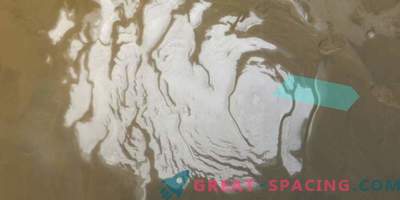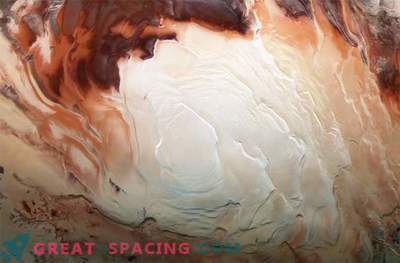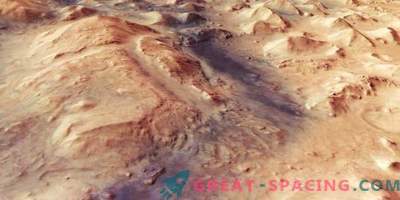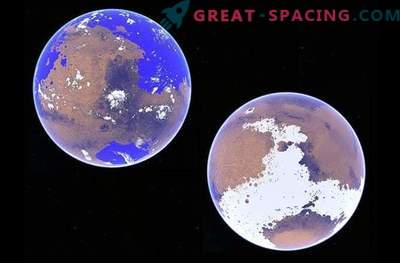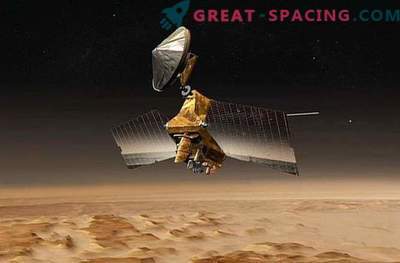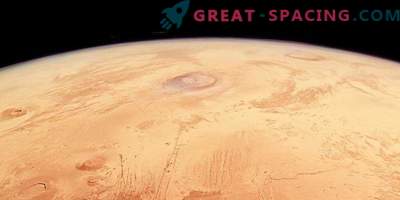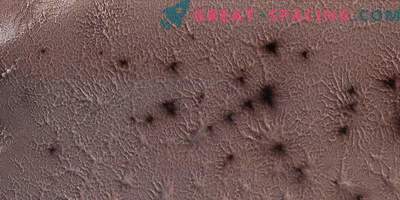
The Mars Express European orbiter provided a new perspective on the Red Pole of the Red Planet, demonstrating incredibly beautiful ancient ice.
This picture resembles macchiato - a frothy milk twist in the upper part of a cup of fragrant coffee. In fact, before you frozen North Pole Mars. Rotating ice resembles foam, but rosy iron oxide, rich in dust, is a coffee drink.
Collected from observations made during 32 flights around the North Pole between 2004 and 2010 and covering a whopping one million square kilometers, the recently released mosaic (below) highlights the planet's lushly structured ice. It is formed by climatic cycles and pressed by the eternal winds.
Combining the combination with data from the Mars Orbiter Laser Altimeter (MOLA) of the Mars Global Surveyor spacecraft (which explored Mars from 1997–2006), the scientists managed to create a “perspective” of the ice cap view by adding depth to the canyons (in the top photo). If you looked at the surface from the airplane window, flying over the north pole, you saw about the same.

This mosaic was created from 32 separate orbital “lanes” captured from 2004-2010. Mars Express High Definition Stereo Camera
Years of research have brought one of the important conclusions: the ice cap is carbon dioxide, “sinking” in winter, when, as expected, 30% of CO2 in the Martian atmosphere simply freezes, adding a seasonal layer of CO2 of ice (“dry ice”) up to a meter thick. As soon as the northern hemisphere begins to warm up with the arrival of spring and summer, this layer of CO2 is transformed and returns as a gas to the atmosphere, leaving permanent water layers of ice behind. A recent study showed that there are many layers of water ice and dust, which allows us to trace how the climate of the planet has changed over several tens of thousands of years. It is believed that the hat, resembling the rotation of a hurricane, is formed under the action of surface winds twisted by the force of the Coriolis of the planet.
In another picture - Canyon North. This is a trench 500 km (310 miles) long, deeper than the Grand Canyon. The ancient valley cuts through the cap, creating something like a petal:

A view of the north polar cap from a different perspective. The width of the North Canyon is 100 km and the depth is 2 km.
In addition to conveying invaluable information about Martian climate history, we may also understand if the planet can be habitable. At least, these new photos show what future astronauts will enjoy when the human mission finally goes to Mars.

